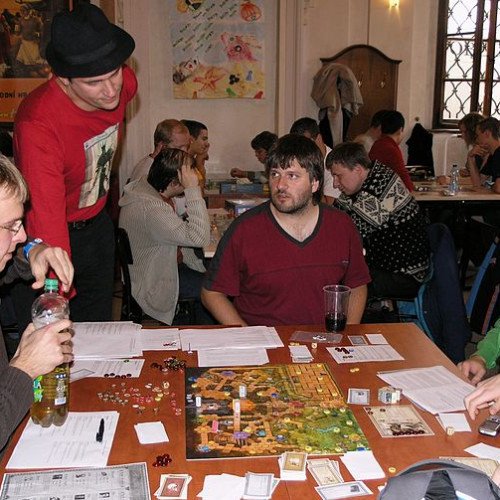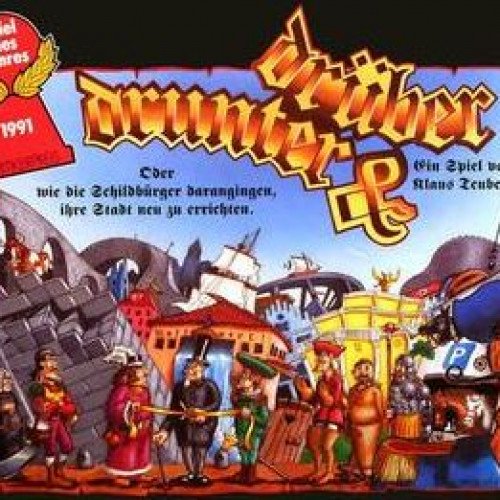"DORN" vs "DRUNTER UND DRÜBER"

DORN
Dorn is a tactical fantasy board game developed in Czech Republic and published by Altar in 2006. One or more players control a group of heroes and one player controls the evil Dornkeeper and his monsters. The heroes need to collect three artifacts from the game board and then they can challenge the Dornkeeper himself. As there is no dice in combat, the game is based on strategy and tactics, when heroes need to cooperate in order to win. There are nine heroes to choose from, each having unique abilities on three experience levels. The Dornkeeper has eight different types of monsters at his disposal. Treasure cards found on the gameboard as well as random Blessing cards make every game quite different, there is no ultimate winning strategy. In November 2009, the first expansion became available, with the title "Eternal Return of the Koschei", featuring new heroes, monsters and an immortal Dornkeeper. The game was originally published in Czech, but is now available in English (including the first expansion). The game was featured in Essen Game Fair in 2008 and received critical acclaim for its original approach to traditional fantasy topic. Positive reviews were published on various gaming sites.
Statistics for this Xoptio

DRUNTER UND DRÜBER
Drunter und Drüber (German: , lit. "under and over", fig. "haywire") is a multiplayer board game invented by Klaus Teuber, first published in 1991 in Germany by Hans im Glück. A second edition was released in 1994 by Hans im Glück and featured art by Franz Vohwinkel. The game was repackaged and rethemed as the western game Wacky Wacky West in 2010. Players take on the role of the people of Schilda and work to build a new town after they burned down their old one. Buildings are already completed and each player is secretly assigned one of six types of buildings, that each appear five times on the board. Buildings closer to the center of the board have a higher point value. Each player is given an identical set of vote cards that are worth varying degrees of yes or no. Every turn, players lay down tiles of streets, rivers, and town walls which add on to existing pieces. Buildings can be covered by tiles, but when someone attempts to build over an outhouse everyone votes on whether to allow it or not. If there are more negative votes, the tile does not get played. Each player tries to keep his or her buildings uncovered. The game ends when all the pieces have been placed or all players pass consecutively; then everyone tallies their score from their remaining buildings on the map and the player with the highest score wins.